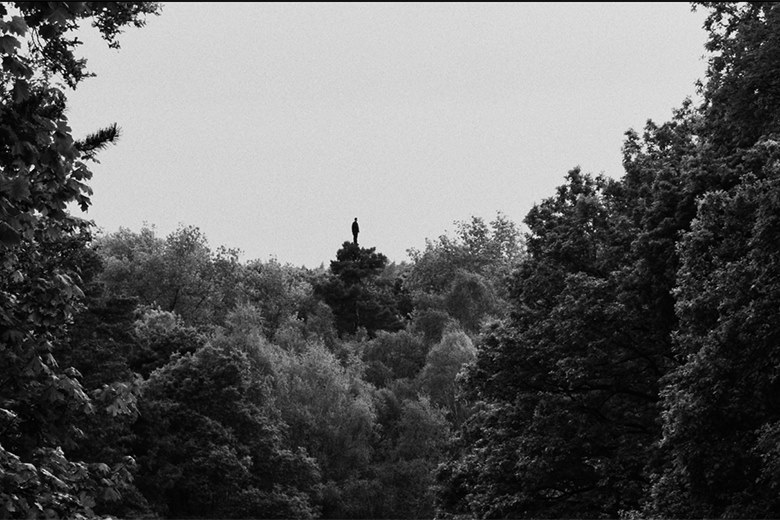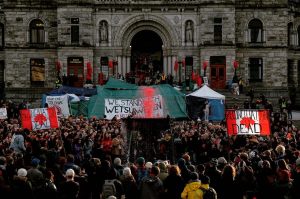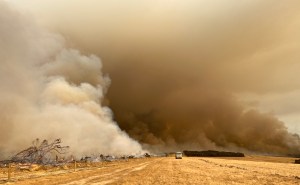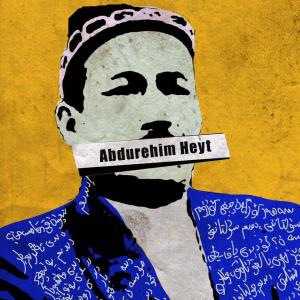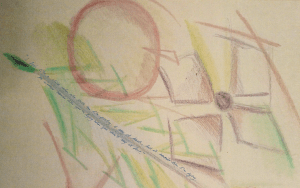“Technically, this country does not exist.”
What is your name?
Kolia.
How old are you?
24.
Married?
Yes.
Do you have Russian or Moldovan citizenship?
I have our Transnistrian passport and a Russian one.
We are in Transnistria.
What?
This is not Moldova.
(Dialogues between Kolia and the interviewer from Extinction, 2018)
The polemics over the contested nationhood of Transnistria (aka., Trans-Dniestr, Pridnestrovskaia Moldavian Republic; hereinafter referred to as PMR) after the collapse of the Soviet Union penetrate Salomé Lamas’ recent film, Extinction (2018). Oscillating between the genres of fiction and documentary, the film contextualizes the histories and the present establishments of the post-Soviet borderland through the voice (and lack thereof) of a stateless individual. As Transnistrian citizen Kolia receives interviews, sojourns on the streets, and goes through the daily work shifts at a local arm-sales factory — and as the camera traces the antique Catholic cathedrals, the aged Marxist-Leninist monuments, and the untraversed forests — he finds himself immersed in the temporalities and political identities that never cease to quarrel, violate, and intersect.
I don’t have an easy relationship with borders.
They frighten and unnerve me.
I have been searched, prodded,
delayed, again and again,
for having the temerity to cross a few meters of land.
(Monologue from Extinction, 2018)
The film casually juxtaposes “the elevated with the banal, with an eerily convincing logic of paradox,” offering, in its own right, a political lens that gives us a glimpse into the ongoing political and personal turmoil. To be sure, the end of the Cold War did not bring a thaw to the whole continent. Transnistria, born out of the polemics of the ‘90s, marks as one of the “frozen conflicts” that manifests the peculiarity of today’s Eurasian landscape. Alongside Nagorno-Karabakh, South Ossetia, Abkhazia, and (the most infamous) Crimea, it remains an unrecognized state broken away from the former Moldavian Soviet Socialist Republic of the late Soviet Union.
Just last month, multiple pro-Kremlin news sources rumored over the likelihood of Transnistria’s returning to Russia in return for Moldova’s EU membership. It seems that the wars and the massive migrations of the 20th century contributed to the constant reshaping of a distinct Transnistrian identity, now conveniently turned into a political stake by both external and internal, Western and Eurasian, “democratic” and pro-Kremlin, actors.
Today, to the ordinary Transnistrian individuals, it has become less and less clear what the borders were originally there for. The place has become haunted by the real and the unreal at the same time.
Regime Change as Trauma: disjointed space and time
At first sight, Transnistria resembles a classic secessionist case. On one hand, possessing Moldova’s key industrial infrastructure, power plants, and most importantly, Soviet-era arms, Transnistria appeals to its parent state (Moldova) with its utilitarian value as an economic and military subsistence. On the other hand, consisting of predominantly ethnic Russians, Transnistria seeks to express its own pro-Soviet identity by pursuing independence.
The conflict historically unfolded on the two sides of the Dneistr River. The left bank, present day Transnistria (dominantly Russian) was given to Imperial Russia by the Ottoman Empire in 1972, while the right bank, present day Moldova (dominantly Romanian), became part of the Russian Empire later on, in 1913. During the imminent Russian Civil War, in 1913, the right bank joined Romania, while the left bank became a republic subordinate to Ukraine SSR. Romania, however, lost WWII, and both sides of the River formed Moldova SSR, subordinate to Moscow. The pro-Romanian right bank, like many of the Sovietized Central Eastern European states, prepared for rebellions towards the end of the Soviet Union. In 1990, the conflicts of identity between the two sides of the River intensified and led to the Transnistrian War.
Transnistria remains under de facto Moldovan control thanks to the mixed factors of Russian support (presence of the 14th Army), geographical insulation (the Dniester separates the entity from Moldova), and the weakness of the parent state. Transnistria’s de facto statehood remained impasse and in “frozen conflicts” until the outbreak of the Ukrainian Crisis of 2014, which led many to worry whether Transnistria is to suffer the same fate as Crimea.
But a systemic, top-down narrative as such necessarily understates the trauma the Transnistrian people experienced from the polemical courses of history. Upon the overnight disintegration of the Soviet Union, many found themselves as subjects and citizens of new nation-states (in contrast to the Soviet multinational model, the nation-state norm assumes the ideology of liberalism). The ethnic Russian (and Ukrainian) population in the territory of Transnistria found itself forced to become Moldovan (ethnically Romanian).
(…)
You were born in Transnistria, weren’t you?
I was born on February 24th, 1990, Rybnitsky district, Lenin village, Soviet Union.
But now — what are you? If someone said that you are Moldovan, then you would counter, “No, I’m Transnistrian.”
Sure.
Aren’t they all the same people?
(…)
(Dialogue ensues from the previous excerpt. Salome Lamas, Extinction, 2018)
Layers of Nation-Building: the elite’s construction, reification, and exploitation of an ethos
The subjective trauma collectively encountered by the Soviet citizens is then exploited, first and foremost, by the national leaders in order to cultivate nationalist ethos on the domestic level. Igor Smirnov, PMR’s first president (in office 1991 - 2011), and Victor Gushan and Ilya Kazmaly, the owners of the tax-collecting Sheriff company, together construct and reify a Transnistrian national identity.
First, the Soviet multinationality ideal, highlighting ethnic autonomy (V. I. Lenin’s self-determination) and ideological unity (enforced, according to Terry Martin, by the Soviet “affirmative actions”), leaked over to form a multicultural modern day Transnistria. The goal was to eliminate inter-ethnic oppressions and to re-distribute the formerly accumulated wealth and power equally among all nations. In today’s Transnistria, according to Michael Bobick’s fieldwork, a Russian‐speaking, ethnic Ukrainian resident explained her Ukrainian ethnicity and Transnistrian citizenship: “I am a Ukrainian, and I am recognized as one [showing her passport where her nationality is inscribed] … here we have no dominant nationality, and three official languages.” Rather than a melting pot, the Soviet nationality model promote the incubation of new nations subscribing to a common ideology of Marxist-Leninism.
The irony consists in the artificial creation of ethnicities, according to a set of outdated Soviet ethnographic criteria. Many of the resulted borders, similar to in the case in the European colonization of Africa, cut through lands inhabited by the same people.
What is Stalin’s chessboard?
He resettled nations, mixed them up, displaced them, so that now one cannot move anyone without moving someone else, without doing them injury.
There are currently 36 border conflicts, perhaps even more.
(Dialogue. Salome Lamas, Extinction, 2018)
Second, Transnistria also undergoes the Western, liberal model of nation-building. Following the formula famously suggested by Benedict Anderson, the imagination of a common Transnistrian nationality was transmitted through print capitalism and mass media. Especially in a contemporary context, where the visual has out-voiced the verbal, the Transnistrian narrative of suffering from political repression, was cultivated through the production and the distribution of traumatic images: Russian-speaking deputies beaten on the streets; women dragged by their hair out of government buildings; and a 16-year-old ethnic Russian killed by a mob of nationalists on the streets (See ‘TRANSNISTRIA ASSESSMENT MISSION REPORT,’ peaceportal.org, link is unfortunately now ineffective)…
…According to Bobick’s fieldwork, as an old Transnistrian man, Boris spoke about the events that occurred in 1990, his voice trailed off and he mentioned that he possessed photographs of these and other crimes.
He opened up a desk drawer and took out a bundle of black and white photographs. The drawer was full, containing hundreds of photographs, including duplicates. One young woman who appeared to be in her early 20s, he calmly explained, had her ears cut off. Pregnant at the time, she was raped and murdered. Her husband, he continued, had his penis cut off. As he handed me a picture, his eyes widened with emotion: ‘What could we do?’ he repeated, shaking his head while looking at me for acknowledgement. The photographs were a visible reminder of what could potentially occur if one was not vigilant. These photographs offered proof as to why left-bank residents responded the way they did, why they rose up and asserted their rights.
But as Roland Barthes suggests, photography cannot signify except by assuming a mask that forms the face into the product of a society and of its history. The Transnistrian people’s armed struggle against the Moldovan state from 1992 on has been, in turn, reified into a righteous past rhetoric of suffering, before which all PMR citizens should worship and “pass on the baton.” These images — along with the idea of the nation, otherwise constructed by the elite class — have now come to rule over their subjects, just like the capitalist commodities that have come to claim their deity before the human laborers. Fear of future incursions and repressions by Moldova and Romania offer a rallying point: if we, as Transnistrians, face a common threat, why not stick together?
State of Exception: a Zone for Illegal Arms, Drugs, and Proxy Warfares
At the same time, PMR’s unrecognized statehood leads to its peculiar position in the blindspot of laws on the international level. Bobick explains:
Law (and its enforcement by institutions and actors sanctioned by the state) remains the crucial mediator, serving both as an objective tool available to members of the political community and prescribing punishments, and should it be required. Much of what is ‘illegal’ about the PMR stems from the fact that the region is alleged to have violated, and continues to violate international law forms.
PMR’s proliferation of crime is thus characterized by “a distinctive and dangerous mix of old-style corruption and an entrepreneurial zeal to embrace the opportunities offered by today’s global underworld.” The European Parliament Ad Hoc Delegation to Moldova described the country as the lieu for the illegal trade in arms, human trafficking, and the laundering of criminal finances .
At the same time, the country experienced a rapid rise in drug use (up by 35% each year, according to Moldovan sources) and also a growing through-trade both to Western Europe from Ukraine, and eastwards from Romania and thence Turkey.
Why do you not answer any questions regarding your work?
I don’t know. I’m not here to answer these questions.
Don’t you work for the Russian Army?
I don’t know.
(Interview with Kolia; shortly after, Kolia abruptly leaves the hotel room and rejects further questions. Salome Lamas, Extinction, 2018)
In its relation to Russia, Transnistria itself has also been turned into a weapon to influence the policy of the Republic of Moldova. Along with South Ossetia, Abkhazia, and (the most famous) Crimea, PMR serves as a proxy platform for Russia to manage a geostrategic balance in Ukraine, Georgia, and Romania, and to stop the eastward expansion of the European Union and NATO.
Unlike the more direct unfolding of proxy warfares (such as the Iran-Saudi war in Syria), the Russian-European confrontations in Transnistria takes the form of the manifested willingness of the political leanings of the local population. Bobick, in another article, explains Moscow’s dependence on the “performance” of democracy to unfold in the people of the PMR. Much like the Ukraine crisis of 2014, it was not a single threat that forced Russia to intervene, but rather the excuse that the bottom-up ethos of the Crimean/Transnistrian protesters offered. Unwilling to wage a formal war with Ukraine/Moldova, Russia manipulates the tenets of democracy and human rights to acquire territories by another means.
As such, the then capital of the Eastern Bloc manipulates and betrays the collective memories and the pro-Russian feelings of the Transnistrian people. It, thus, comes with little surprise that Russia, despite its flirtation with PMR, never recognized the latter’s statehood.
The international actors, especially the observer parties such as the UN, the European Union, and the United States, are reluctant to hear from the voices of the Transnistrians, having long demonized the unrecognized people as an extension of the anti-West Russia.
Echoing Giorgio Agamben’s description of a state of exception, the Transnistrian suffering — from being made a zone for justifiable illegal exchange and proxy wars — demonstrates that under the current international law and political landscape, the lives of the outlawed (the Transnistrians and other de facto peoples) are constantly sacrificed to protect the lives of the self-authenticated collectives (the recognized modern nation-states).
Why do I care about borders.
Our soul is not a border.
I’m nobody.
I live in Transnistria. Therefore i’m nobody.
The screen blacks out. Apparently drunk, the old man starts to sing, with irony, with laughter, the Russian national anthem.
Russia—our sacred blessed Homeland,
Russia—our adorned and beloved country.
A mighty willpower in greatness and glory
Are yours forever for all enduring time!
(Monologue by a drunkard. Salome Lamas, Extinction, 2018)
This piece is written with the inspiration of Samole Lamas’ film; it is written, above all, in hope of witnessing the independence of the Transnistrian people, the elevation of the region from legitimized crime, and the end of regional and international interventions in domestic politics.

